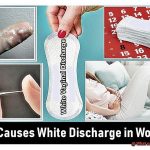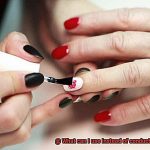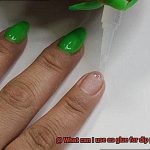Picture this: you’re enjoying a delicious meal, savoring every bite, when suddenly – crunch. Your tooth chips, and your world comes crashing down. It’s like life decided to throw you a curveball, reminding you that even the strongest teeth can have their weak moments. But fear not, my friend. When it comes to fixing that pesky chip, there’s a secret weapon in your arsenal – glue.
Now, before you start rummaging through your junk drawer for any old adhesive, let’s embark on a quest to uncover the best ways to mend your chipped tooth. From professional dental bonding to quick-fixes you can whip up at home, we’ll delve into each method’s materials, techniques, risks, and rewards.
So, buckle up and get ready for an adventure towards a glued and grinning masterpiece of a tooth.
Regular Household Glue and Super Glue Should Not Be Used
Contents
- 1 Regular Household Glue and Super Glue Should Not Be Used
- 2 Dental Bonding as an Effective Method to Repair Minor Chips
- 3 When a Dental Crown May be Necessary
- 4 Temporary Measures to Protect the Chipped Tooth
- 4.1 Dental Wax: Shielding your tooth with a protective barrier
- 4.2 Cold Compress: Immediate relief for swelling and discomfort
- 4.3 Soft Foods: Nourishing without further damage
- 4.4 Gentle Oral Hygiene: Careful cleaning for overall oral health
- 4.5 Over-the-Counter Pain Relievers: Managing discomfort with caution
- 5 Avoid Chewing on Hard or Sticky Foods
- 6 Maintaining Good Oral Hygiene
- 7 Brushing Twice a Day, Flossing Daily, and Using Mouthwash
- 8 Seeking Professional Dental Care for a Chipped Tooth
- 9 Conclusion
In the world of DIY repairs, it’s easy to reach for regular household glue or super glue to fix a variety of items. However, when it comes to certain applications, such as dental repairs, using these adhesives can be a risky endeavor.
In this blog post, we will explore the potential dangers and drawbacks of using regular household glue and super glue, as well as provide alternative solutions for various household repairs.
The Toxicity of Regular Household Glue and Super Glue:
Regular household glue and super glue contain harmful chemicals that can cause irritation, burns, and tissue damage when applied to delicate surfaces. These adhesives were not designed to come into contact with skin or mucous membranes, such as those found in the mouth.
Ingesting these substances can also lead to serious health complications. It is essential to understand that dental materials are specifically formulated to be safe and compatible with oral tissues.
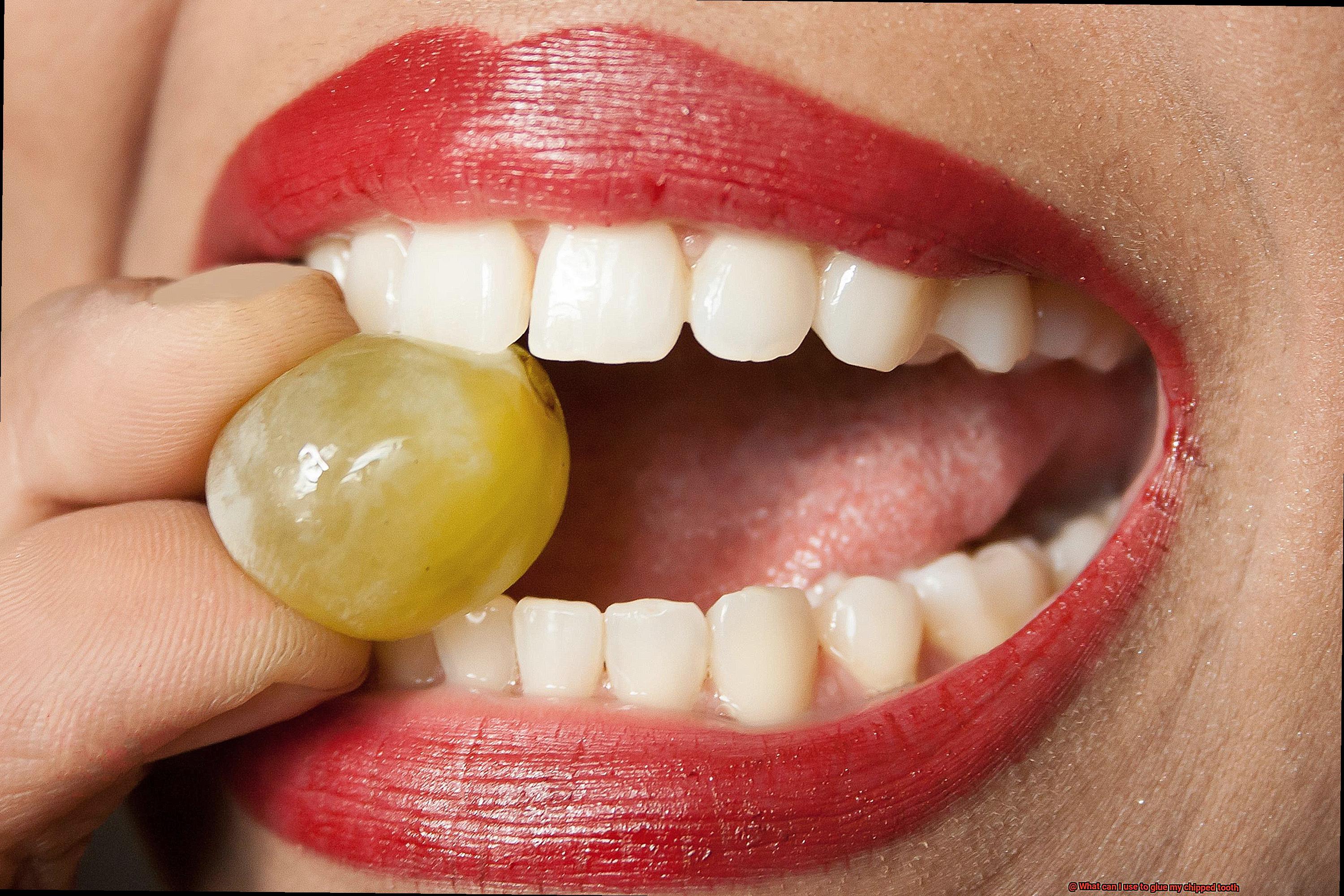
Lack of Biocompatibility:
Regular household glue and super glue are not designed to bond effectively with specific materials, such as teeth or other dental surfaces. Dental materials, on the other hand, are specifically developed to be biocompatible, ensuring they do not cause harm or irritation when applied.
Using adhesives not specifically designed for dental use can result in further damage or complications.
Inadequate Strength and Durability:
While regular household glue or super glue may provide a temporary solution for certain repairs, they lack the necessary strength and durability required for long-lasting results. These adhesives are not designed to withstand the forces and pressures that various materials endure in everyday use.
Using inappropriate adhesive materials can lead to the repair breaking or dislodging, resulting in further damage or requiring additional repairs.
Alternative Solutions:
Instead of using regular household glue or super glue, it is crucial to seek alternative solutions for various repairs. There are specialized adhesives available for specific applications, such as woodworking, metal bonding, or plastic repairs.
These adhesives are designed to provide superior strength and durability while ensuring compatibility with the materials being bonded. It is always best to choose the appropriate adhesive for the specific repair or project at hand.
Dental Bonding as an Effective Method to Repair Minor Chips
Have you ever chipped a tooth and wished there was a quick and effective way to restore it? Look no further than dental bonding. Dental bonding is a popular and highly effective method used by dentists to repair minor chips in teeth. In this article, we’ll dive into the details of dental bonding, how it works, and why it’s an excellent choice for restoring your smile.
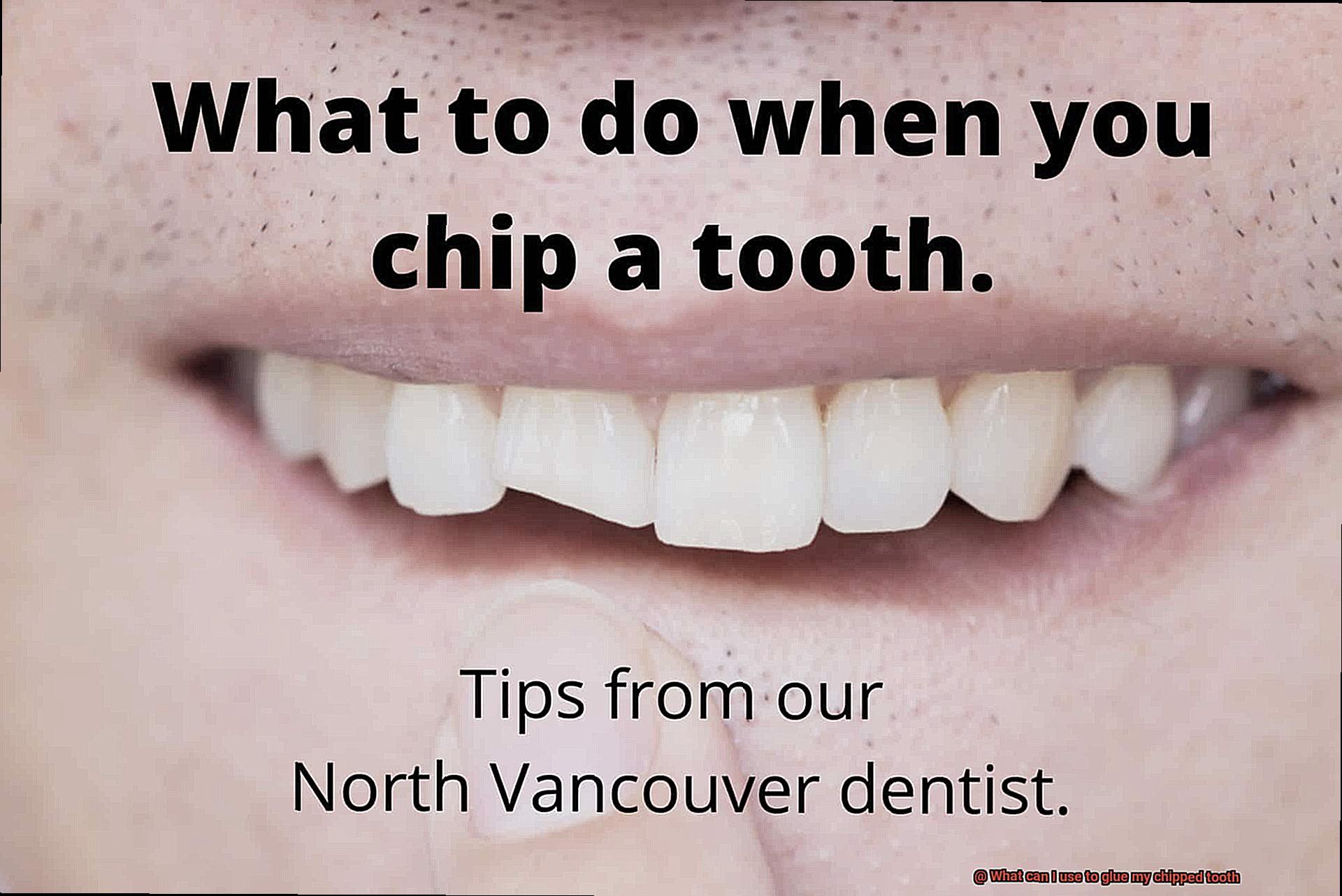
What is dental bonding?
Dental bonding involves the use of a tooth-colored resin material that is applied to the chipped area of the tooth. This resin material is a composite that is specially formulated to mimic the natural color and appearance of teeth. The process requires skill and precision to ensure optimal results.
The dental bonding procedure:
- Preparation: Before starting the bonding process, your dentist will clean and prepare the chipped tooth by roughening its surface. This step helps create a better adhesion between the bonding material and the tooth.
- Conditioning: Next, your dentist will apply a conditioning liquid to the chipped tooth. This liquid further enhances the bonding process by promoting better adherence of the resin material.
- Application: The tooth-colored resin material is then carefully applied to the chipped area of the tooth. Your dentist will shape and mold the resin to match the natural contours of your tooth, ensuring a seamless blend with the surrounding teeth.
- Bonding: To harden and bond the resin material to your tooth, your dentist will use a special light or laser. This process usually takes just a few minutes.
- Shaping and polishing: Once the bonding material has hardened, your dentist will refine its shape and polish it to perfection. This final step ensures that the bonded tooth looks and feels natural.
Advantages of dental bonding:
- Minimally invasive: Dental bonding requires minimal removal of tooth structure compared to other restoration options like crowns or veneers. This means your natural tooth is preserved to a greater extent.
- Quick and painless: Dental bonding is typically completed in a single visit to the dentist’s office, making it a convenient option for busy individuals. The procedure is usually painless and doesn’t require any anesthesia.
- Aesthetically pleasing: The resin material used in dental bonding is carefully color-matched to your natural teeth, resulting in a seamless and natural-looking repair.
- Versatile: Dental bonding can be used not only for repairing minor chips but also for fixing other cosmetic dental issues such as discoloration, gaps, and misshapen teeth.
Longevity and care:
With proper care and maintenance, dental bonding can last several years before requiring touch-up or repair. Practicing good oral hygiene habits, avoiding biting on hard objects, and regular dental check-ups will help prolong the lifespan of your bonded tooth.
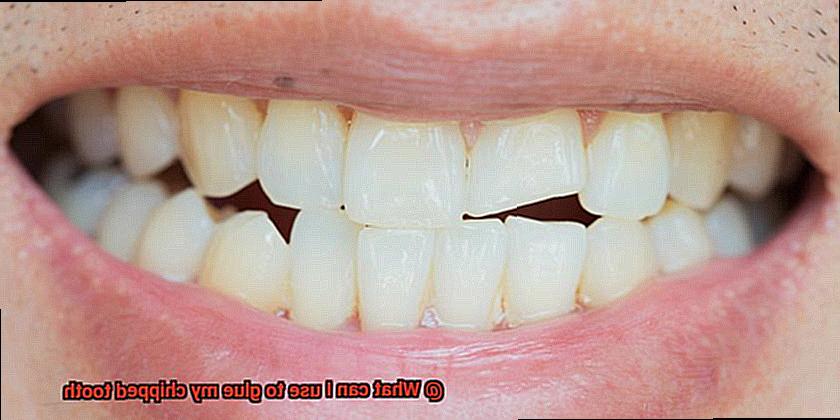
When a Dental Crown May be Necessary
When it comes to dental restorations, a dental crown is a popular option for treating damaged or decayed teeth. But when is a dental crown necessary? Let’s dive into this topic and explore the situations where a dental crown may be recommended.
One common reason for getting a dental crown is when a tooth has a large cavity that cannot be adequately filled with a regular filling. In these cases, a dental crown can provide the necessary support and protection to restore the tooth’s functionality. Imagine your tooth as a crumbling castle wall, vulnerable to further decay and damage. A dental crown acts as a protective fortress, shielding the weakened tooth from external harm.
Dental crowns are also often used to treat teeth that are cracked, broken, or severely worn down. These teeth are like battle-worn warriors, in need of reinforcement and restoration. The crown acts as a knight in shining armor, covering and strengthening the damaged tooth, preventing further fractures or breakage. Additionally, the crown improves the overall strength of the tooth, allowing you to confidently bite and chew without worry.
The process of getting a dental crown usually involves two appointments. During the first appointment, the tooth is prepared by removing any decay or damage and shaping it to accommodate the crown. It’s like sculpting a masterpiece, carefully crafting the foundation for the crown. An impression of the tooth is then taken and sent to a dental laboratory where the crown will be custom-made. In the meantime, a temporary crown is placed on the tooth to protect it, like a placeholder until the grand unveiling. Finally, during the second appointment, the temporary crown is removed and the permanent crown is cemented onto the tooth, completing the transformation.
Dental crowns are known for their durability and longevity. With proper care and maintenance, they can last for many years, standing strong against the test of time. They are also versatile in terms of their functionality and appearance. Not only do they protect and strengthen damaged teeth, but they can also improve their appearance by enhancing their shape, size, and color. It’s like getting a dental makeover, transforming a damaged tooth into a beautiful work of art.
However, it’s important to note that not every chipped tooth requires a dental crown. In some cases, less invasive treatment options such as dental bonding or veneers may be more appropriate. Consulting with a dentist is crucial to determine the best course of action for your specific case. They will evaluate the extent of the damage, consider your oral health history, and discuss your goals and preferences before recommending a treatment plan.
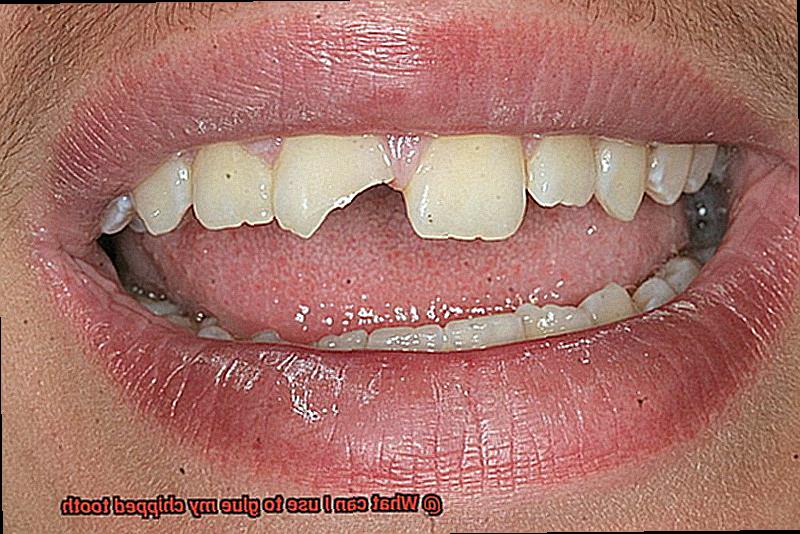
Temporary Measures to Protect the Chipped Tooth
Chipping a tooth can be a distressing experience, but fear not. There are temporary measures you can take to protect your chipped tooth before seeking professional dental treatment. In this article, we will explore some easy and effective ways to safeguard your damaged tooth until you can see a dentist. So, let’s dive in.
Dental Wax: Shielding your tooth with a protective barrier
One of the simplest temporary solutions is dental wax, readily available at most drugstores. This pliable substance acts as a shield, providing a protective barrier between your tooth and surrounding tissues. By applying a small amount of wax to the chipped area, you can prevent irritation and further damage while finding some relief.
Over-the-Counter Dental Cement or Temporary Filling: A quick fix at home
Temporary dental cement or filling materials are designed specifically for quick fixes. These user-friendly products can be conveniently applied at home. However, it is crucial to remember that they are temporary solutions only. Follow the instructions carefully and use them until you can consult with a dentist for a permanent solution.
Cold Compress: Immediate relief for swelling and discomfort
To reduce swelling and alleviate discomfort associated with the chipped tooth, apply a cold compress to the outside of your mouth. The cold temperature constricts blood vessels, reducing inflammation and providing immediate relief while you wait for professional care.
Soft Foods: Nourishing without further damage
Avoiding hard or chewy foods is crucial to prevent further damage to your chipped tooth. Opt for softer foods that do not require excessive chewing until you can see your dentist. Think soothing soups, creamy mashed potatoes, and velvety yogurt – gentle on your teeth but still satisfying.
Gentle Oral Hygiene: Careful cleaning for overall oral health
Maintaining proper oral hygiene is important, even with a chipped tooth. Gently brush and floss around the affected area, being cautious not to put excessive pressure on the chipped tooth itself. This way, you can keep your mouth clean and minimize any risk of infection.
Over-the-Counter Pain Relievers: Managing discomfort with caution
Over-the-counter pain relievers like ibuprofen or acetaminophen can help manage any pain or discomfort associated with the chipped tooth. However, always follow the instructions and consult with a healthcare professional if you have any concerns or questions.
While a chipped tooth can be unsettling, these temporary measures can help protect your tooth until you can see a dentist. Remember, these remedies should only be used as temporary solutions.
Seeking professional dental care is essential to ensure proper treatment and prevent further damage. Take care of your chipped tooth, and soon you’ll be smiling confidently again.
Avoid Chewing on Hard or Sticky Foods
So, you’ve found yourself with a chipped tooth. It happens to the best of us. But now it’s time to take action and protect your smile. One of the most important steps you can take is to avoid chewing on hard or sticky foods. In this blog post, we’ll explore why it’s crucial to steer clear of these types of foods and provide practical tips on what to eat instead. Let’s dive in and keep that chipped tooth safe.
Why Avoid Hard Foods?
- Excessive Pressure: Crunching on hard foods like ice, hard candies, nuts, or popcorn kernels puts excessive pressure on your chipped tooth. This increases the risk of further damage or even tooth dislodgement.
- Chipping and Cracking: Hard foods have a knack for chipping or cracking teeth even more. And trust us, repairing a more damaged tooth is not a walk in the park. Prevention is always better than cure.
Why Steer Clear of Sticky Foods?
- Sticking Dilemma: Sticky foods like caramel, taffy, and chewing gum love sticking to the chipped area of your tooth. When you chew on these sticky treats, they pull on the tooth, causing more damage and pain.
- Risk of Infection: The sticky residue left behind by these foods is an invitation for harmful bacteria. This increases the risk of infection and complicates your dental health.
What Can You Eat Instead?
- Soft Foods: Give your chipped tooth some love by opting for softer options that are easier to chew and less likely to cause further damage. Think mashed potatoes, soups, yogurt, scrambled eggs, and cooked vegetables.
- Balanced Diet: Embrace a diet rich in fruits, vegetables, lean proteins, and dairy products to promote overall oral health and aid in the healing process.
- Mindful Chewing: When you eat, chew on the opposite side of your mouth to reduce strain on the chipped tooth. And please, avoid using your teeth as tools to tear or open packages. Your chipped tooth will thank you.
Maintaining Good Oral Hygiene
Today, we embark on a journey into the realm of oral hygiene, exploring the importance of maintaining it when faced with a chipped tooth. Whether you possess the honor of owning a chipped tooth or simply desire to learn how to care for your pearly whites like a seasoned expert, this article is tailor-made for you. So, grab your trusty toothbrush and let’s dive in.
Brushing:
The cornerstone of good oral hygiene lies in the art of brushing your teeth at least twice daily. Employing a soft-bristled toothbrush and fluoride toothpaste, gently cleanse all surfaces, including the vicinity surrounding your chipped tooth. Remember to employ small, circular motions, reaching every nook and cranny, even those nestled at the back of your mouth.
Flossing:
Never underestimate the power of flossing. Regular flossing aids in the removal of plaque and food particles that may become lodged between your teeth, including those around your precious chipped tooth. Glide the floss back and forth between your teeth with utmost care, avoiding irritation to the chipped region.
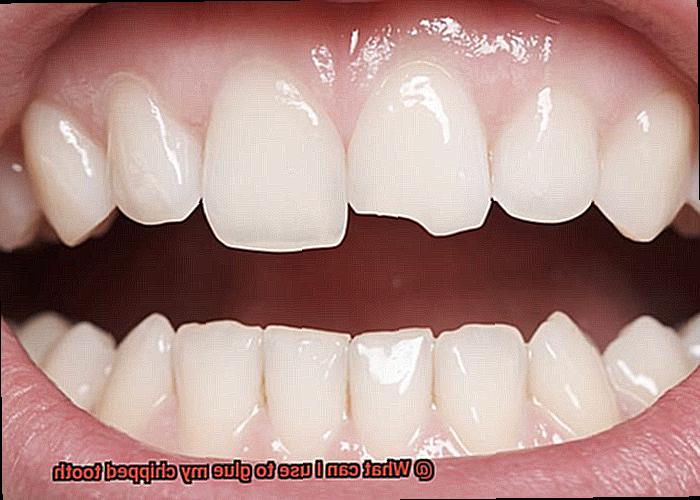
Mouthwash Magic:
Infusing your routine with an antimicrobial mouthwash can perform miracles for your oral health. Seek out a mouthwash containing fluoride to bolster your teeth’s strength and prevent cavities. After brushing and flossing, gargle with the mouthwash for approximately 30 seconds, unveiling breath as fresh as a summer breeze.
Dental Check-ups:
Neglect not those regular dental check-ups. Your dentist is a cherished ally when it comes to preserving good oral hygiene. They possess the expertise to professionally cleanse your teeth, eliminating tenacious plaque and tartar buildup that brushing alone cannot eliminate. During these appointments, they will also evaluate the condition of your chipped tooth, offering guidance on treatment or maintenance.
Mindful Eating:
Safeguard your chipped tooth by steering clear of hard and sticky foods that can exacerbate damage. Opt for softer alternatives such as creamy mashed potatoes and soothing soups, and chew on the opposite side of your mouth to reduce strain. Remember, a balanced diet teeming with fruits, vegetables, lean proteins, and whole grains serves as the bedrock of overall oral health.
Brushing Twice a Day, Flossing Daily, and Using Mouthwash
Today, we embark on a quest to discover the secrets behind achieving a healthy and dazzling smile. By brushing twice a day, flossing daily, and using mouthwash, we unlock the full potential of our oral health routine. So, grab your toothbrushes and let’s dive into this enchanting journey.
The Fundamental Magic: Brushing Twice a Day:
Brushing twice a day is the cornerstone of good oral hygiene. It banishes plaque, bacteria, and food particles from our teeth and gums. With a soft-bristled toothbrush and fluoride toothpaste in hand, we ensure a thorough cleanse. Remember to brush for at least two minutes, reaching every nook and cranny – the front, back, and chewing surfaces.
Unveiling Hidden Treasures: Flossing Daily:
Ah, flossing – the unsung hero of oral hygiene. It ventures where our toothbrushes cannot tread. Daily flossing eliminates plaque and food debris from between our teeth and along the gumline. Whether you choose dental floss or interdental brushes, gently slide between each tooth, forming a C-shape around it. Glide up and down to clean those sides meticulously.
The Magic Elixir: Using Mouthwash:
Now comes the magical elixir – mouthwash. Adding mouthwash to our routine bestows additional benefits on our oral health. It freshens breath, combats plaque buildup, and eradicates bacteria that may lead to gum disease or cavities. Opt for fluoride mouthwash for fortified teeth or antibacterial variants for fighting gum disease. Swish it around your mouth for 30 seconds before spitting it out.
Proper Techniques for Optimal Results:
To unleash the full potential of our oral hygiene routine, we must master proper techniques. Brush gently in circular motions, avoiding harsh scrubbing that may harm our enamel. Floss patiently and diligently, ensuring thorough cleaning between each tooth. When using mouthwash, follow the instructions on the label – usually after brushing and flossing.
The Wise Wizards: Regular Dental Check-ups:
Even the most skilled adventurers seek guidance from wise wizards – in this case, our dentists. Regular dental check-ups are vital for maintaining good oral health. Dentists detect early signs of dental issues like cavities or gum disease and provide appropriate treatment or advice. They may recommend specific dental products based on our unique oral health needs.
Seeking Professional Dental Care for a Chipped Tooth
When faced with a chipped tooth, it is essential to seek professional dental care. While temporary solutions may seem tempting, consulting with a dentist is crucial to address the underlying issue and prevent further damage or complications. Dentists possess the expertise and tools necessary to assess the extent of the chip and determine the most appropriate treatment plan. By conducting a thorough examination of the tooth, surrounding structures, and overall oral health, dentists ensure that any underlying problems are addressed.
One common treatment option for a chipped tooth is dental bonding. This procedure involves applying a tooth-colored resin material to the damaged area and shaping and polishing it to match the natural appearance of the tooth. Dental bonding is a quick and relatively inexpensive solution for minor chips. However, in cases where the chip is more severe or involves a significant portion of the tooth, other treatments such as dental crowns or veneers may be recommended. These restorative options provide more comprehensive coverage and protection, restoring strength and functionality to the damaged tooth.
Seeking professional dental care also enables proper diagnosis and identification of any associated issues. If the chip occurred due to decay or weakened enamel, dentists can address these concerns during treatment, preventing further damage and maintaining good oral health in the long term. Furthermore, dentists have access to advanced techniques and materials that may not be available over-the-counter or through DIY methods. By providing stronger and more durable solutions, dentists ensure that the repaired tooth can withstand everyday wear and tear.
It is important to note that attempting to glue a chipped tooth at home using over-the-counter adhesives or household products is not recommended. These substances are not designed for dental use and may cause further damage or introduce harmful bacteria into the mouth. Seeking professional dental care allows for personalized and tailored treatment options. Dentists consider factors such as the location and severity of the chip, the patient’s oral health history, and their aesthetic goals. This ensures that the treatment plan is customized to meet the individual’s needs, providing the best possible outcome.
FuTN1ZUdXtw” >
Conclusion
If you find yourself with a chipped tooth and are wondering what you can use to repair it, there are a few options available.
One option is dental adhesive, which is specifically designed for bonding materials in the mouth. This adhesive is typically made of a safe and non-toxic material that is suitable for temporary repairs.
Another option is dental wax, which can be molded and shaped to fill in the chipped area of the tooth. Dental wax provides a temporary solution until you can see a dentist for a more permanent fix.
Lastly, if you have access to an emergency dental kit, it may contain dental cement or filling material that can be used to temporarily bond the chipped portion of your tooth.



